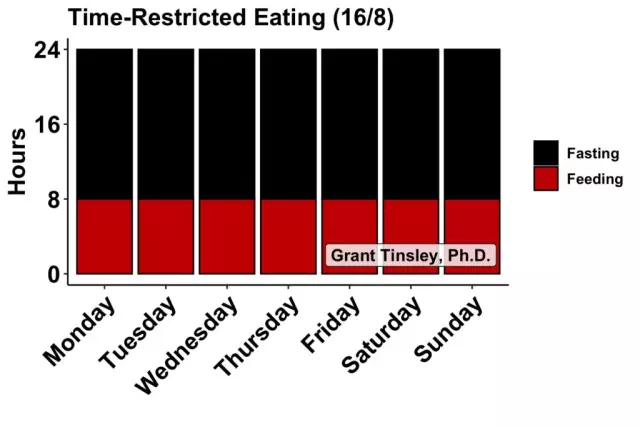- Author Rachel Wainwright [email protected].
- Public 2023-12-15 07:39.
- Last modified 2025-11-02 20:14.
Fasting at home

Fasting at home is a voluntary refusal to eat any food. Voluntarily stopping food for a certain amount of time leads to amazing changes. During fasting, the reserve forces of the body are turned on, work begins to destroy harmful deposits. Salt deposits, toxic metabolic products, slags are removed from the body. During fasting, the glycogen reserve in the liver decreases, metabolism slows down, dizziness and weakness appear. Then the human body switches to endogenous (internal) nutrition due to the accumulated fat cells. Those who have lost those extra pounds by fasting at home have noted its amazing results. This is a feeling of youth and lightness, improvement of the condition of nails and hair, getting rid of snoring.
Types of fasting
There are several types of fasting. With complete (water) fasting, you can use only water in unlimited quantities. This type of fasting is suitable both for the treatment of various diseases and for weight loss. To enhance the healing effect, it is recommended to use distilled water. It is necessary to get out of water starvation very carefully, under the supervision of specialists. Absolute (dry) fasting is the absolute refusal to consume liquids and food. Dry fasting should last no more than three days. Complete fasting at home is undesirable. It is best to practice this type of fasting in sanatoriums and health centers.
In terms of duration, food abstinence can be one-day (daily), three-day, five-day, weekly (seven-day) and long-term. With a daily fast, only water is allowed.
A three-day home fast can be used to reboot and cleanse the body. 3-day fasting is considered to be the most optimal fasting time.
The method of carrying out a three-day fast does not differ from one-day food abstinence. Before carrying out a 3-day fast at home, it is advisable to consult with a specialist. 3-day fasting is possible even during pregnancy and lactation. With a three-day fast, the body only partially transfers to internal nutrition. You should not start a three-day fast without spending one day several times.
Weekly food abstinence is aimed at cleansing the body and curing various diseases. Prolonged fasting can last up to a month. This type of fasting should be carried out exclusively in sanatoriums and specialized complexes. For any type of food abstinence, it is helpful to keep a fasting diary. In the fasting diary, you need to record your feelings and objective data indicating a change in state.
Pros and cons of fasting
The undoubted advantages of medical fasting include the health-improving effect resulting from the activation of the body's defenses. The fasting process has a positive effect on the endocrine system, the body's metabolism. With food abstinence, salt deposits of the spine and joints evaporate. Fasting not only cleanses the body, but also activates all processes at the cellular, molecular and tissue levels.
The disadvantages of food abstinence include the need to use regular cleansing practices. One-time fasting at home will not lead to the desired result. Before food abstinence, preliminary preparation is necessary. It is very important to learn the fasting method and gradually increase its duration.
Home Fasting Cycle
Before fasting, it is very important to cleanse the intestines so that toxins are not absorbed and do not poison the body. Laxatives and enemas are used to cleanse the intestines. Fasting popularizer Paul Bragg noted that it is possible to start food abstinence without prior preparation. However, a modern person simply needs preliminary purification. Poor food quality and environmental levels lead to severe intestinal pollution. Poisons accumulated in the digestive tract can enter the bloodstream. It is best to switch to dairy and plant foods two to three days before the start of fasting, excluding legumes and meat from the diet. Coarse food will help cleanse the intestinal walls. All this will ensure an easy transition to fasting, well-being and effective weight loss.
It is very important to get out of fasting correctly. The classic way out of fasting is the intake of liquid and easily digestible food. Food should be introduced in small portions. First, pureed vegetables, salads, and then cereals and meat dishes should be introduced into the diet. Fruit and vegetable juices diluted with water are best for the first meal. Bragg on the way out recommended eating tomatoes warmed in warm water and peeled.
Improper fasting at home can lead to body poisoning, impaired fat metabolism, and loss of muscle mass.
Fasting cycle for 5 days

When fasting for 5 days, a laxative should be taken on the eve of the first day. For this, 60 g of magnesia sulfate is dissolved in 100 ml of hot water. The resulting solution is taken orally warm. The next day, you need to do a cleansing enema, and then take a ten-minute shower or bath. After that, with slightly salted water, you need to rinse the nasopharynx, brush your teeth and tongue with a soft brush. Then rinse the mouth and throat with a solution of baking soda or potassium permanganate. After water procedures, it is necessary to carry out self-massage or general pressure massage until the skin is slightly reddened. After the massage - compulsory gymnastics and a walk in the fresh air. A day with food abstinence should be filled with physical and mental work, positive communication. During fasting, you need to record changes in heart rate, temperature,blood pressure, respiratory rate. The effect obtained from fasting for 5 days at home must be consolidated with proper nutrition during the recovery period.
Lunar fasting calendar
According to the lunar calendar, fasting for up to seven days should be carried out only in the second or fourth phase of the lunar cycle. The lunar fasting calendar indicates that it is during this period that a natural cleansing of the human body occurs. It is better to start food abstinence for more than a week so that most of the days of hunger fall on the second and fourth phases of the lunar cycle.
According to the calendar, fasting for more than 14 days should be planned so that the exit from hunger coincides with the beginning of the lunar cycle. Fasting in the first and third phases of the lunar cycle is considered ineffective. During this period, the body gives up toxins poorly. One-day food abstinence is best done on the 11th day after the new moon and on the 11th day after the full moon.
Found a mistake in the text? Select it and press Ctrl + Enter.






